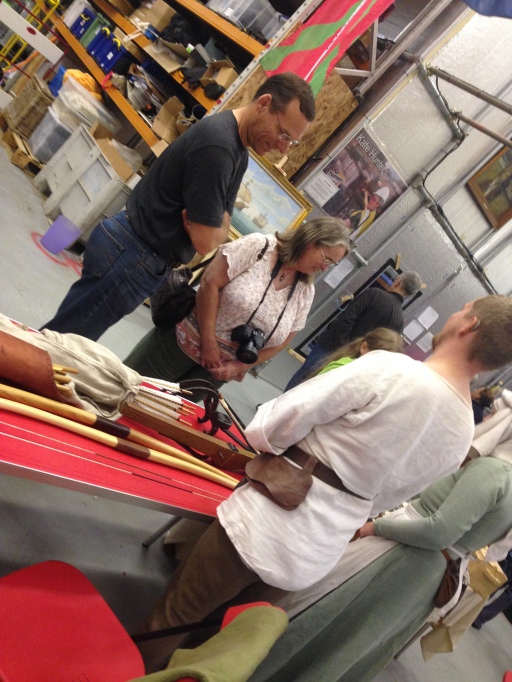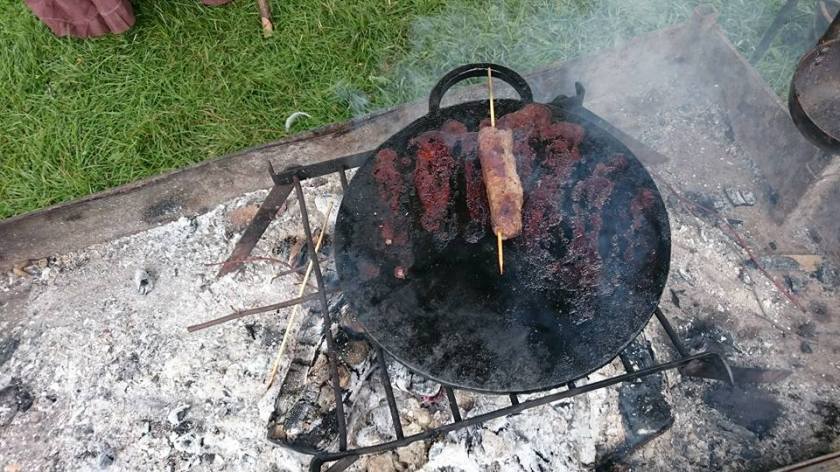We were delighted to return to the Newport Ship this month for their open day. Now in their new warehouse, this medieval ship is being painstakingly preserved and studied. Five hundred timbers had returned from freeze-drying at the York Archaeological Trust only two days before, so it was great to have a look at the progressing work.

We set up a range of displays for the public to help interpret medieval life including archery, weapons, armour, crafts and music. It is always great to make links between our displays and the archaeology at hand. For example, in showing medieval spinning and wool processing we could relate this to the sheep wool (potentially of Merino type [Mulville and Hunter Zooarch JISCMail 2003]) and other animal products that were found in the ship’s caulking and luting material; these included raw fibres, dyed fibres and woven material which were used in sealing the timbers and plugging leaks (Jones 2013, 4 & 10). The ship also had a silver coin inserted into a cut out in the stempost/keel join, potentially placed as a token of good fortune at the start of the ship’s construction. A largely 15th century (and thus contemporary) token or badge consists of a coin sealed inside a pewter purse (Spencer 1998; Spencer 1990, 116-117, 134-135, Figures 311-314c). One interpretation of these finds is that a belief existed that carrying a token of wealth increased your chances of attracting wealth to you.
We look forward to seeing the ship’s continued conservation and reassembly!





Jones, T. 2013. S.O.S. News from the Friends of the Newport Ship, 21.
Spencer, B. 1998. Museum of London Medieval Finds from Excavations in London 7: Pilgrim Souvenirs and Secular Badges. London: The Stationery Office.
Spencer, B. 1990. Salisbury & South Wiltshire Museum Medieval Catalogue Part 2: Pilgrim Souvenirs & Secular Badges. Wiltshire: Salisbury & South Wiltshire Museum.

































